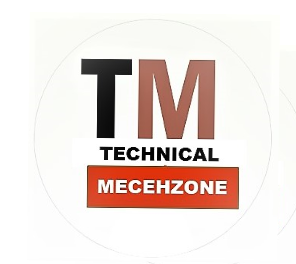Tag: Technical Information
GRINDING MACHINE: TYPES OF GRINDING WHEEL AND GRINDING MACHINE OPERATION
In this post, you learn the grinding machine and grinding machine operation, types of grinding wheel and more.
Grinding Machine
Contents hide
1. Grinding Machine
2.Hardness Comparison of Abrasive Material
3.Cost of Grinding Wheel
4. Life of Grinding Wheel
5. Selection of Abrasives in Grinding
6.Silicon carbide
7. Aluminium oxide
8. Selection of Grinding Wheels
9. Bond and Types of bond
10. Vitrified Bond
11. Silicate Bond
12. Shellac Bond
13. Rubber Bond
14. Resinoid Bond
15 Wheel Grit, Grade and Structure
16. Grit
17 .Grade
18. Structure
19. Balancing, Dressing, and Truing of Grinding wheels
20 . Balancing
21. Dressing
22. Truing
23. Grinding Machine Operation
24. Surface Grinding
25. Cylindrical Grinding
A grinder is commonly used to precisely shape and finish the given materials with low surface roughness and high surface quality. Grinding machine is a type of machine used to grind the workpieces. It basically uses emery or an abrasive wheel as the cutting tool.
The grinding process is truly a chip producing machining process. The rough surface of the abrasive wheel spreads into small portions of the workpiece as required. It is also known as a grinder.
The grinding process is capable of producing very accurate sizes, equally accurate geometry like flatness or circle and extremely good surface finish. It is capable of machining hardness high-speed steel, which cannot be done by other machining processes.
Abrasives wheels are the impure form of aluminium oxide. A grinding wheel or bonded abrasive is made up of thousands of tiny abrasive particles insert in matric calls as ‘bond’.
In bonded abrasives, porosity is essential to provide clearance for the chips being produced and to provide cooling, otherwise chips would interfere with the griding process.
Hardness Comparison of Abrasive Material
An abrasive is a second hardest material, compared to diamond.
Aluminium oxide (hardness of 2000-3000)
Silicon carbide (hardness of 2100-3000). These are the perfect examples of conventional abrasives.
The cubic boron nitrite (hardness of 4000-5000)
Diamond (hardness of 7000-8000) comes under the category of super abrasives.
In addition to hardness, an important characteristic called friability. Friability is the ability of abrasive grains to fracture (break) into small pieces. High friability indicates low strength or low fracture resistance of the abrasive.
For example, aluminium oxide has a lower friability than silicon carbide and has fewer tendencies to a piece. Bonded abrasive are marked with a standardization system of letters and numbers, indicating the type of abrasive, grain size, grade, structure, and bond type.
Cost of Grinding Wheel
The cost of grinding wheel depends on the type of size of the wheel.
Small wheels of 25mm diameter cost up to 10$ for conventional abrasive and for diamond up to 200$.
Large wheel of 500mm diameter and 250mm width, the cost is about 8000$ to 20000$.
Life of Grinding Wheel
When a grinding wheel is applied to the workpiece, the sharp edges of the abrasive grains which are cutting, will, in the end, lose their cutting effect and become dull.
At that stage, the abrasive grains should either split or form new edges or it should break away from the wheel exposing the next layer of grains to do work.

If the dulled grains stay in the wheel, they simply keep on rubbing on work without actually cutting. This defect is known as ‘glazing’. If on the other hand, the abrasive grains break away from the wheel or split prematurely, before becoming dull, it causes a reduction in life of the grinding wheel.
Selection of Abrasives in Grinding
- Emery and corundum are no longer used in modern grinding wheels.
- instead, artificially manufactured abrasives are used due to their high purity. And they include silicon carbide and aluminium oxide.
1. Silicon carbide
- Silicon carbide is greenish-black in colour.
- It is harder and more brittle than alumina. For this reason, it is used for grinding materials of low grinding resistance like cast iron, brass, and copper.
- The code for silicon carbide is C.
2. Aluminium oxide
- It is reddish-brown in colour.
- Aluminium oxide abrasive is more suitable for grinding most steels because of its greater toughness to cope with increased grinding resistance offered.
- Aluminium oxide wheels it is A.
The abrasive, the performance of grinding wheels also depends on many other factors. It is important that a suitable grinding wheel is selected for particular applications.
Selection of Grinding Wheels
It means choosing the most appropriate wheel for a particular grinding machine operation. Wheel selection would depend on what abrasive is required, and characteristic of the wheels and also on operating conditions like a wheel and work speed, type and conditions of machines used.
Thumb rule is to use a hard wheel for soft material and soft wheel for hard material. A hard wheel retains the abrasives as they do not get dulled easily on soft materials.
Bond and Types of bond
Bond refers to the substance of which the matrix of the grinding wheel is made. The following bonds are generally used in the manufacture of grinding wheels. The bond hardness or grade is usually represented by the letters of the English alphabet.
A represents the very soft grade, while Z is very hard M and N represent medium grade hardness.
- Vitrified Bond
- Silicated Bond
- Shellac Bond
- Rubber Bond
- Resinoid Bond
1. Vitrified Bond
- It is denoted by letter V.
- About 80% of the wheels used in the industry are of this bond.
- It is also called as ceramic bond.
- They are strong, stiff, porous, and resistant to oils, acids, and water. They are brittle and lack resistance to mechanical and thermal shock.
2. Silicate Bond
- It is denoted by letter S.
- Silicate of soda (commonly known as water glass) is the main component of this bond.
3. Shellac Bond
- It is denoted by letter E.
- Shellac (a naturally available material) is the main component of the bond.
4. Rubber Bond
- It is denoted by letter R.
- This process consists of mixing crude rubber, sulfur, and the abrasive grains together, rolling the mixture into sheets, cutting out circles and heating them under pressure to vulcanize the rubber.
- The wheels can be made like this and can be used as saws for cutting-off operations.
5. Resinoid Bond
- It is denoted by letter B.
- Resoniod bonding materials are thermosetting resins, and the bond is an organic compound, so the wheels with resinoid bonds are also called as organic wheels.
- Some of these wheels are made from bakelite and other resinous material.
Wheel Grit, Grade and Structure
1. Grit
Grit indicates the size of the abrasive grain. It is indicated by a number. Higher the number, smaller the size of grains. Abrasives finer than 200, are called “flours” designated as F, FF, and FFF.
The finer abrasive used as jewellers. For the fine finish of ground surface,
- smaller grit size abrasive wheels are used. But their metal cutting capacity is limited.
- Large size abrasive wheels, finish is rough but metal removal rate is higher.
2. Grade
The degree of hardness possessed by the bond is called the grade of the wheel and indicates the strength of the grip with which the abrasive grains are held in the bond.
It indicates the type and the amount of bond in the wheel. It is also referred to as the hardness of a bonded abrasive. A hard wheel has a stronger bond and a larger amount of bonding material between the grains than a soft wheel.
3. Structure
Structure of a bonded abrasive is a measure of the porosity (spacing between the grains). The structure of the bond material in a wheel varies from about 10% to 30% of its total volume. Structure of the bond depends upon this percentage.
If the abrasive grains are too strictly packed, the percentage of bond material will be on the lower side this is called a closed structure. If the abrasive grains are less strictly packed in the same volume, the wheels are called an open structure.
The structure is indicated by a number varying from 1 (very closed structure) to 15 (very open structure. On every grinding machine wheel, the manufactures are limit to give the following information. in specified sequence about the,
- Abrasive used (A or C)
- Grit number (ex: 46)
- Grade ( A to Z)
- Structure (1 to 5)
- Bond type (by letters)
In addition, the manufacturer is free to supply some additional information with the above information.
Balancing, Dressing, and Truing of Grinding wheels
1. Balancing
A grinding wheel is a fragile tool which is to be used to get perfect service. proper mounting and balancing of the wheel are very important.
Balancing is needed as wheels revolve at higher speed (many thousand r.p.m.) and any unbalanced centrifugal forces may crack the wheel or spoil and bearing.
2. Dressing
The dressing is the process of producing sharp edges on grains, conditioning worn grains on the surface of a grinding wheel. It is required when the wheel is dull or tired.
3. Truing
The Truing is like a dressing operation by which wheel comes back to its original shape, thus around the wheel is dressed to make its circumference a true circle.
Truing is done during fitting fresh wheel and also it is necessary after the wheel has been in use for some time, to correct the non-uniform wear on its face.
For softer wheels, truing and dressing are done separately and for harder wheels, both are done at the same time. The truing or dressing up of grinding wheels are normally done by a diamond tool. Being harder, it is able to cut through, the
Grinding Machine Operation
The common grinding machine operation are surface, cylindrical, internal and centreless grinding. Now let us discuss each one by one,
1. Surface Grinding
It involves grinding flat surfaces. Here the workpiece is fitted with a magnetic chuck attached to a work table of the grinder. Non-magnetic are held by vices or fixtures. A straight wheel is mounted on the horizontal spindle of the grinder.
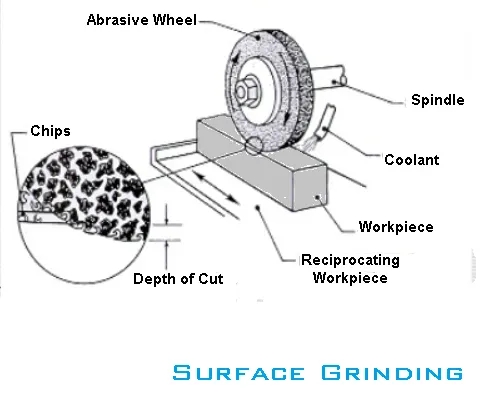
Transverse grinding occurs as the table reciprocates longitudinally and feeds laterally after each stroke.
12. Cylindrical Grinding
In this, the operation is carried out on a cylindrical grinding machine which is made in two varieties “plain” and the “universal” type. The fundamental design is the same in both cases, but the universal machine can be adapted for internal grinding operation as well.
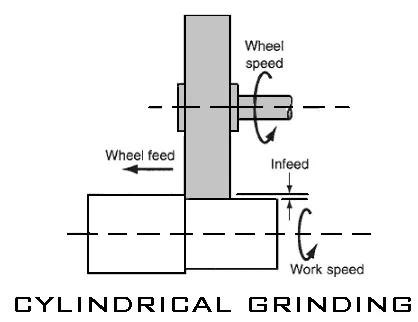
In cylindrical grinding machine operation, the work is mounted between two centres and is rotated. A grinding wheel is mounted on a spindle and revolves at a higher speed than the work. The depth of cut is very small, about 0.015 mm.
The work centres are mounted on a table which can transverse at various feeds so that the entire length of the work passes to and fro in front of the wheel.
When the entire work has passed in front of the wheel, the wheel advances forward by another 0.015mm at the end of the transverse and so the cycle of machining goes on until the desired diameter of the workpiece is reached. The result is a long cylinder of the perfectly circular profile with a very fine surface finish.
3. Internal Grinding
The Internal grinding operation means, grinding of internal holes or bores. Internal grinding is designed to grind the surface of bores, whether plain or tapered with the help of a small grinding wheel mounted on a long slender spindle which can enter in the bore.
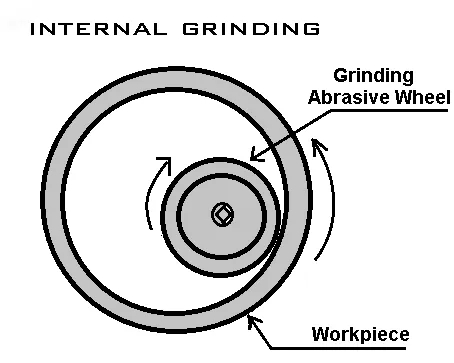
It is capable of giving improved geometry of the hole as well as the surface finish. This operation is performed on specially designed internal grinding machines. For internal grinding, a softer wheel is generally preferred.
4. Centreless Grinding
It is a high production process for continuously grinding cylindrical surfaces in which the workpiece is supported not by centres or chucks, but by a blade. Parts with the diameter as small as 0.1mm can be ground by this method.
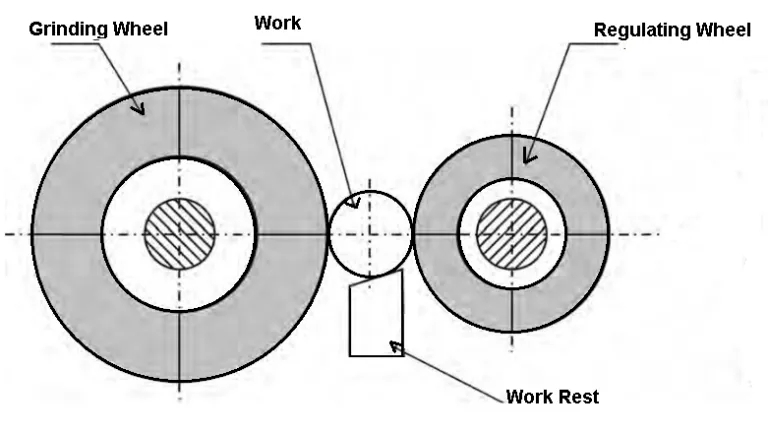
surface speed of the wheel is about 10000m/min using cubic boron nitride abrasive wheels. Parts such as roller bearing, piston pins, engine valves, and camshafts are made by centreless grinding.
The feed-in case of centreless grinding is given as,
S = ΠDN sinα
Where,
- S = Feed
- D = Diameter of regulating wheel
- N = Speed in r.p.m
- α = Angle of tilt.
Types of Centreless Grinding
The following are the three type of centreless grinding,
- Through feed
- Infeed
- End feed
1. Through Feed
In this type of grinding the whole length of the bar or shaft is grinded which is placed on the work rest. The amount of material removed is 0.02 to 0.3mm.
2. Infeed
This type of grinding is used to grind parts that require multiple profiles to be grinded at the same time. The regulating wheel is moved backwards to place the workpiece on the work rest. This type of grinding is mainly used for formed grinding stops are provided at both the ends.
13. End Feed
In this type of grinding the tapered parts are grinded either the grinding wheel or the regulating wheel will have a tapered form.
Advantages of Centreless Grinding
- A true floating condition exit so that little amount of material is removed.
- There is no deflection of the work and small fragile workpiece can be grinded easily.
- The process is continuous and used for production work.
- No extra attachments such as centres, chucks are required.
- The size of the work is easily controlled.
- unskilled labour is required.
Disadvantages of Centreless Grinding
- There is no concentricity when hollow workpieces are grinded.
- The workpiece having multiple diameters cannot be grinded easily.
If you have any doubt or suggestion regarding “grinding machine” post please feel free to ask on comment section we’ll respond you.
What is the Oort cloud: the very edge of the solar system (Raj78verma)
At the edge of the Sun’s gravitational influence, there’s a cloud of ice and rock. Probably.
Every system needs a boundary, and the Solar System is no different. Although we haven’t been able to physically reach and see it, we have a theory about what this edge looks like. And its name is the Oort cloud.
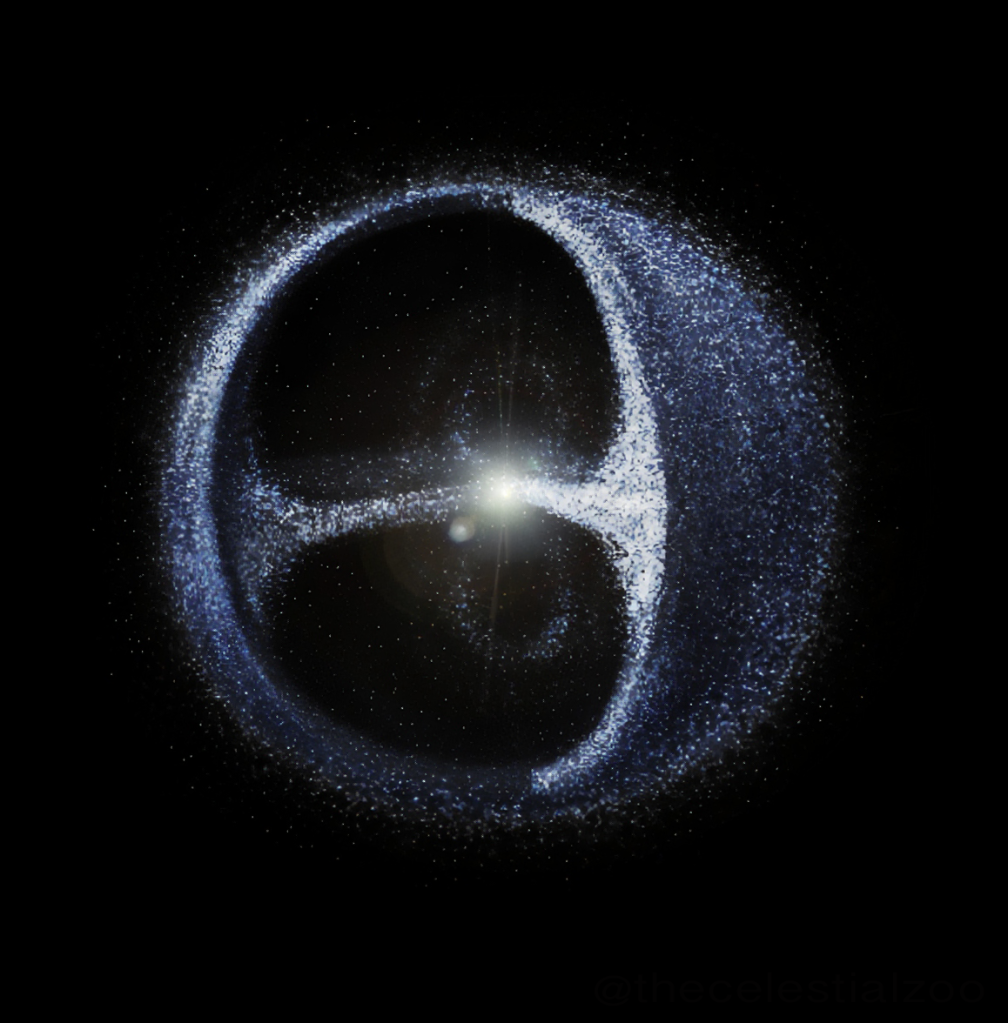
Ask anyone on the street where the Solar System ends, and they’re likely to mention Pluto. To a certain extent, it wouldn’t be wrong; Pluto really is the farthest planet / dwarf planet from the Sun. But if we want to be all sciency about it — and we do — the Solar System arguably ends where our star’s gravitational influence becomes too weak to capture and hold objects. In other words, it spans over all the space where the Sun is the dominating tidal force (Smoluchowski, Torbett, 1984). Exactly what constitutes the edge of the Solar System is still up to some debate, however, and some sources — including this post by NASA — consider the space beyond the heliosphere as being ‘interstellar space’.
For the purposes of this post, however, we’ll take the volume where the Sun’s gravity reigns supreme as being the Solar System. The point where that influence ends is far, far away from Earth. So far away, in fact, that we’ve never been able to actually see it, and, realistically speaking, there’s no way humanity will reach there while any of us reading this are still alive. But we do have some theories regarding what goes on out there.
The boundary of the Solar System is marked by a hypothetical structure known as the Oort cloud. We estimate that it is a truly vast expanse filled with varied clusters of ice, from innumerable tiny chunks up to a few billion planetesimals of around 20 kilometers (12 mi) in diameter. There are likely a few rocky or metallic asteroids here, as well, but not many in number. The material in the Oort cloud was likely drawn to its current position through the gravitational influence of the gas giants — Jupiter, Saturn, Neptune, and Uranus — in the early days of the Solar System.
So what is it?
The thing to keep in mind here is that the Oort cloud is a hypothetical structure. We haven’t yet seen it, nor do we have any direct evidence of it being real. But its existence would fit with other elements and phenomena we see in the Solar System, and it does fit our theoretical understanding of the world around us, as well.
The Oort cloud is a vast body. Since it’s a theoretical structure, there’s quite a bit of uncertainty in our estimates of its size. Still, we believe it stretches from around 0.03 to 0.08 light-years from the Sun, although other estimates put its outer boundary at 0.8 light-years from the Sun. There are also estimates that place it between 1.58 and 3.16 light-years away from the Sun. Needless to say, we don’t have a good handle on exactly where it is, and how large it is.
“It is like a big, thick-walled bubble made of icy pieces of space debris the sizes of mountains and sometimes larger. The Oort Cloud might contain billions, or even trillions, of objects, ” NASA explains.
But to give you a rough idea of the distances involved, however, we’ll use Voyager 1, the fastest-going probe we’ve ever sent to space, and the one currently farthest away from Earth. On its current course and acceleration, Voyager 1 would reach the Oort cloud in around 300 years; it would take it some 30,000 years to pass through the cloud (depending on its actual dimensions).

Still, don’t get too excited. None of the space probes humanity has launched so far will still be operational by the time they reach the Oort cloud; despite being powered by RTGs, a type of nuclear battery, all of these crafts will run out of power far before they reach the Oort clour.
Why do we think it’s a thing?
The concept of the Oort cloud was first suggested in the 1930s by Estonian astronomer Ernst Öpik. The idea was cemented in the 1950s when its existence was independently suggested a second time by Jan Oort, a Dutch astronomer. Because of this dual origin, it is sometimes referred to as the Öpik–Oort cloud.
The existence of this cloud was proposed mainly due to comets — long-period and Halley-type comets, to be precise. Since comets coming close to the Sun lose part of their volatile contents (for example water) under the influence of solar radiation, logic dictates that they must form away from the star. At the same time, gravitational influences would see them either collide with a planet or star or be ejected from the Solar System eventually — meaning that their ‘lifespan’ is limited. Since there are still comets zipping around the Sun, this means that there must be a reservoir of comets to be drawn towards our star.
Put together, both of these point to the existence of a cloud-like formation at the very edge of the Sun‘s gravitational influence populated with comet-like bodies — the Oort cloud.
Short-period comets orbit around the Sun every few hundreds of years; because of this short time, it’s generally accepted that they originate from structures closer to Earth, such as the Kuiper belt (a field of asteroids extending past Neptune). Long-period comets, however, can have orbits lasting thousands of years. The only source that could explain such huge spans of time is the Oort cloud. One exception to these rules is Halley-type comets. Although they are short-period comets, we believe they’re originally from the Oort cloud and that they’ve been pulled ever closer to the center of the Solar System under the gravitational effects of the Sun and inner planets.
What are we doing to study it?
The main impediment to our studying of the Oort cloud is distance. It’s simply too far away for our spaceships or probes to reach in any practical manner. There also haven’t been any direct observations of the Oort cloud.
Despite this, its existence is widely accepted in academic circles. Researchers rely on indirect methods of study to peer into the secrets of the Oort cloud. These revolve heavily around the study of comets and their properties. There is also a lot of effort being poured into developing devices and methods that can be used to spot individual bodies inside the Oort cloud. This is no easy feat, as they’re quite tiny by cosmological standards, and very far away.
Once we do have such tools at our disposal, however, astronomers will finally be able to confirm whether the Oort cloud actually exists. It’s very likely that it does, and it would fit with our current understanding of the Universe. But until we can see it, we won’t be able to tell for sure
Posted by Technical Mechzone
Does our Solar System have a wall?
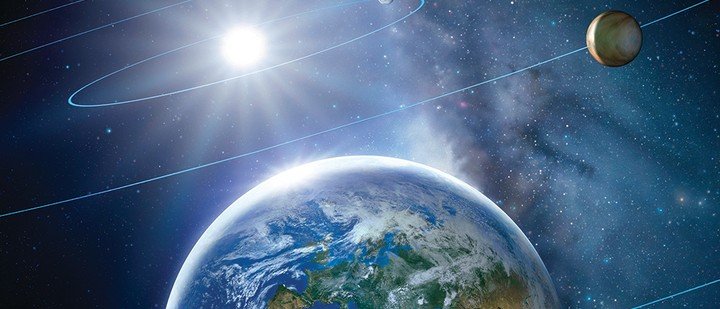
Marking the boundary of our Solar System and interstellar space, this ‘wall’ provides important protection for the Earth.
Yes and no. True, scientists sometimes describe the rise in temperature at the Solar System’s ‘heliopause’ as a wall. This is the region of space where the ‘solar wind’ – the constant stream of mostly protons, electrons, and alpha particles emitted by the Sun – is no longer strong enough to push back the ‘wind’ of particles coming from distant stars. Here, the hot, tenuous solar wind plasma (ionised gas) gives way to the colder, denser ‘interstellar medium’ (ISM).
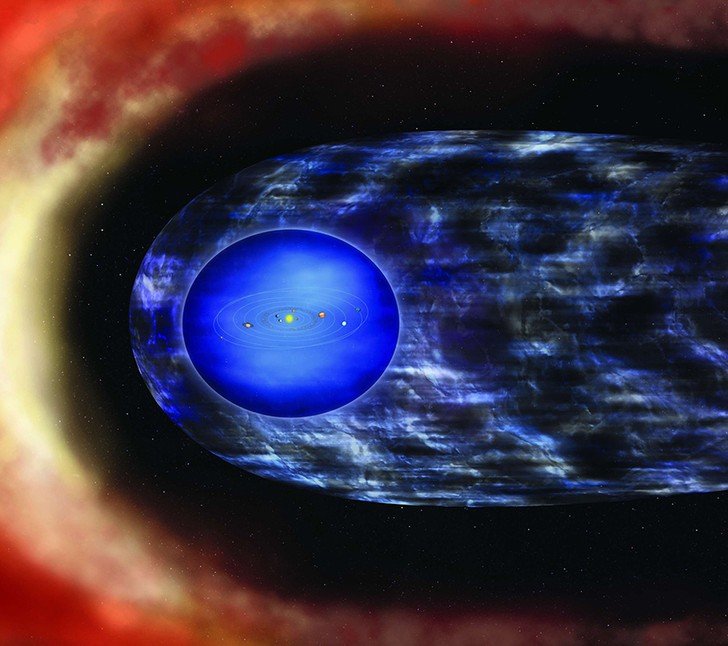
The heliopause marks the boundary between the Solar System and interstellar space – it is the edge of the ‘heliosphere’, the bubble of space in which the Sun’s magnetic field and particle emissions dominate.
How large is this important boundary? Consider that one astronomical unit, AU, is defined as the average distance between the Earth and the Sun. The heliosphere lies at about 120AUs from the Sun in the direction facing the interstellar wind – and in the opposite direction it extends to at least 350AU.
By deflecting 70 per cent of energetic ‘cosmic rays’, the Sun’s heliosphere is crucial in protecting the Earth (and hence humans) from harmful interstellar radiation.
Launched in 1977, initially bound for Jupiter and Saturn, NASA’s Voyager 1 and Voyager 2 spacecraft appear to have crossed the Sun’s heliopause on 25 August 2012 and 5 November 2018, respectively. Instruments onboard Voyager 2 discovered that as plasma at the heliopause slows down, it becomes denser and the local magnetic field increases.
Just beyond the heliopause, the temperature of the ISM is a staggering 29,700–50,000°C. This region has somewhat sensationally been dubbed the ‘wall of fire’. This is misleading because, although it is incredibly hot, the plasma here is extremely diffuse; meaning the Voyager probes (or anything else for that matter) can easily pass through the heliopause completely unharmed.
Posted by Technical Mechzone
Earth and Mars: एकदम धरती की तरह है इस ग्रह की `मिट्टी`, पहले दिखते भी थे एक समान
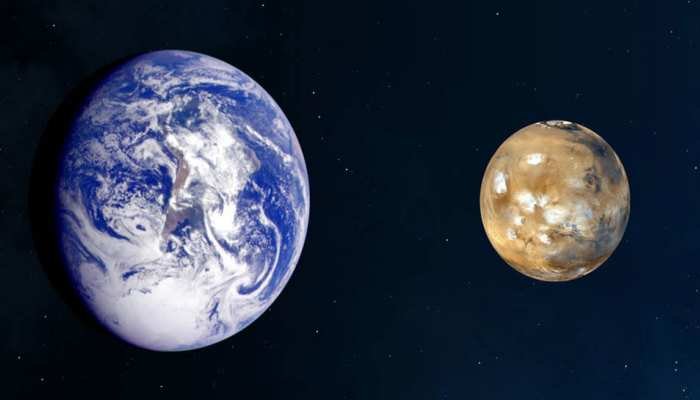
वॉशिंगटन: मंगल (Mars) ग्रह पर लगातार जीवन की खोज कर रहे वैज्ञानिकों का दावा है कि अरबों साल पहले पृथ्वी (Earth) और मंगल (Mars) ग्रह बिल्कुल एक जैसे नजर आते थे. वैज्ञानिकों का कहना है कि एक समय पर मंगल (Mars) ग्रह बिल्कुल पृथ्वी (Earth) की तरह था और ये दोनों ग्रह एक ही तरह की ‘सामग्री’ से बने हैं.
एक ही ‘मिट्टी’ से बने हैं दोनों ग्रह
एस्ट्रोबायोलॉजिस्ट डॉ. बेकी मैककौली रेंच ने एक यूट्यूब वीडियो में कहा कि मंगल ग्रह पृथ्वी की तरह ही था. ऐसे सबूत मिले हैं जो दिखाते हैं कि लाल ग्रह पर झीलें और धाराएं मौजूद थीं. उन्होंने कहा कि चार बिलियन साल पहले जब सोलर सिस्टम बना था, तब मंगल और पृथ्वी एक ही तरह की ‘सामग्री’ से बने थे और ये दोनों दिखने में एक जैसे लगते थे.
मंगल पर पानी की खोज
आज मंगल एक ‘सूखा ग्रह’ है, जबकि पृथ्वी एक नीला ग्रह है. पृथ्वी पर 70 फीसदी पानी मौजूद है. हालांकि हाल में की गई खोज में मंगल पर भी झीलों और धाराओं के सबूत मिले हैं.
वैज्ञानिकों के मुताबिक, मंगल पर आज भी पानी ठोस अवस्था में मौजूद है. वैज्ञानिक ग्रह के ठंडे और बर्फ वाले हिस्सों की जांच कर रहे हैं. डॉ. रेंच ने कहा कि मंगल के बारे में स्टडी पृथ्वी के विकास को लेकर हमारी समझ को बढ़ा सकती है.
प्राचीन झील में जीवन के निशान
नासा ने अपनी एक स्टडी में पुष्टि की है कि मंगल ग्रह पर पाई गई एक प्राचीन झील में जीवन के निशान मिल सकते हैं. नासा के Perseverance रोवर ने इसकी तस्वीरें ली हैं. वैज्ञानिकों का मानना है कि Jezero क्रेटर 3.7 बिलियन साल पहले एक झील थी, लेकिन जलवायु परिवर्तन की वजह से ये झील सूख गई. वैज्ञानिकों के मुताबिक, क्रेटर की मिट्टी में अभी भी प्राचीन जीवन के निशान मौजूद हो सकते हैं.
दोनों ग्रहों पर जीवन को लेकर डॉ रेंच ने कहा कि पृथ्वी प्लेट टेक्टोनिक्स के साथ विकसित होती रही और ग्रह पर जीवन की उत्पत्ति हुई. वहीं मंगल की भूवैज्ञानिक गतिविधियां थम गईं, धीरे-धीरे पानी खत्म हो गया और ग्रह पूरी तरह सूख गया.
Posted by Technical Mechzone
World`s Best Tourist Places: ये हैं दुनिया की सबसे खूबसूरत टूरिस्ट डेस्टिनेशन्स, तस्वीर देखते ही करेंगे ट्रिप प्लान
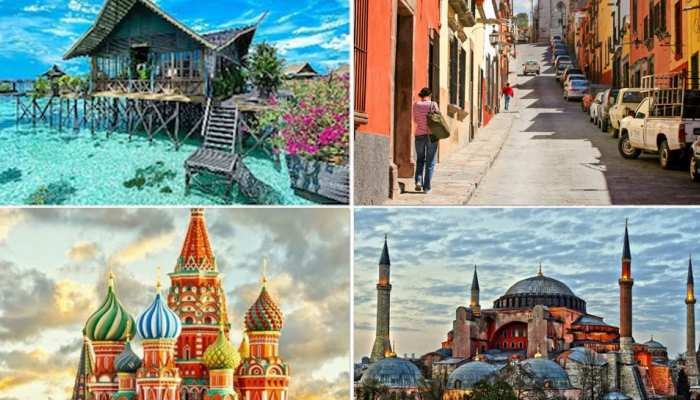
अगर आप भी फैमिली के साथ फॉरेन ट्रिप प्लान कर रहे हैं तो ये खबर आप ही के लिए है. आज हम आपको दुनिया की सबसे खूबसूरत जगहों के बारे में बताएंगे साथ ही वहां की तस्वीरें भी दिखाएंगे
नई दिल्ली: दुनिया भर में ऐसे कई स्थान हैं, जो अपनी खूबसूरती के लिए फेमस हैं. इन जगहों को देखने और यहां समय बिताने के लिए हजारों-लाखों सैलानी यहां आते हैं. कोरोना से छुटकारा पाने के बाद अगर आप भी ऐसे ही किसी खूबसूरत टूरिस्ट डेस्टिनेशन पर जाना चाहते हैं, तो आज हम आपको दुनिया की कुछ सबसे खूबसूरत जगहों के बारे में बताने जा रहे हैं, जहां की तस्वीरें आप देखते ही रह जाएंगे.
1. तुर्की
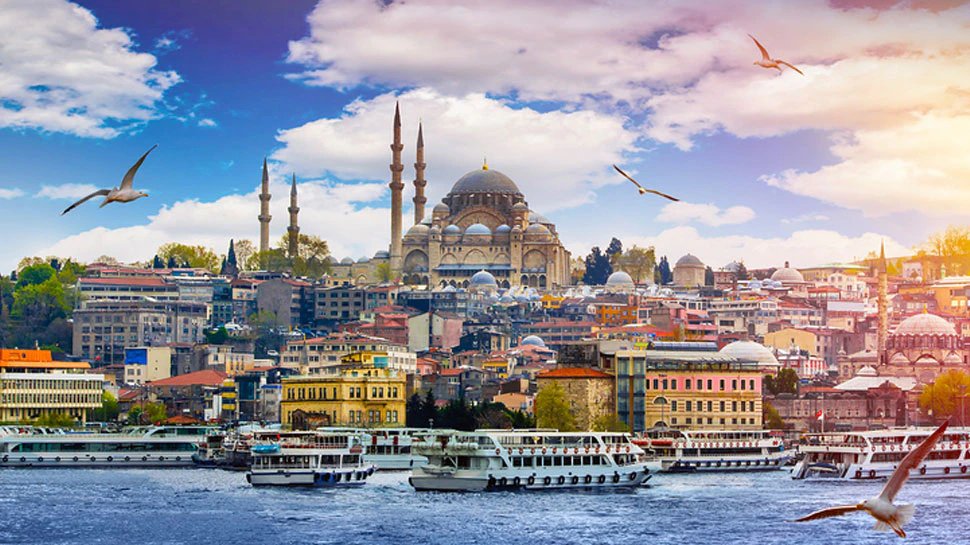
एशिया और यूरोप की सीमा पर बसा तुर्की एक बहुत ही खूबसूरत देश है. तुर्की ऐतिहासिक स्थलों, आकर्षक नजारों, तरह-तरह के मसालों, हलचल भरे बाजारों और नाइटक्लब के लिए जाना जाता है. दूर-दूर से टूरिस्ट यहां की प्राकृतिक सुंदरता, चमकता सूरज, रेतीले बीच और स्वादिष्ट कबाबों का लुत्फ लेने के लिए आते हैं. यहां सुल्तान अहमद मस्जिद है, जिसे नीली मस्जिद के नाम से भी जाना जाता है. ये ऑटोमन वास्तुकला पर बनी पहली और एकमात्र छह मीनार मस्जिद है. इसके अलावा आप कप्पडोसिया जा सकते हैं. ये तुर्की के बीचोबीच बसा हुआ शहर है. यहां की अंडरग्राउंड जगहें, सूरज डूबने का खूबसूरत नजारा, हॉट एयर बलून राइड और गुफानुमा होटल देखकर आप बार-बार यहां आना चाहेंगे.
2. मॉस्को
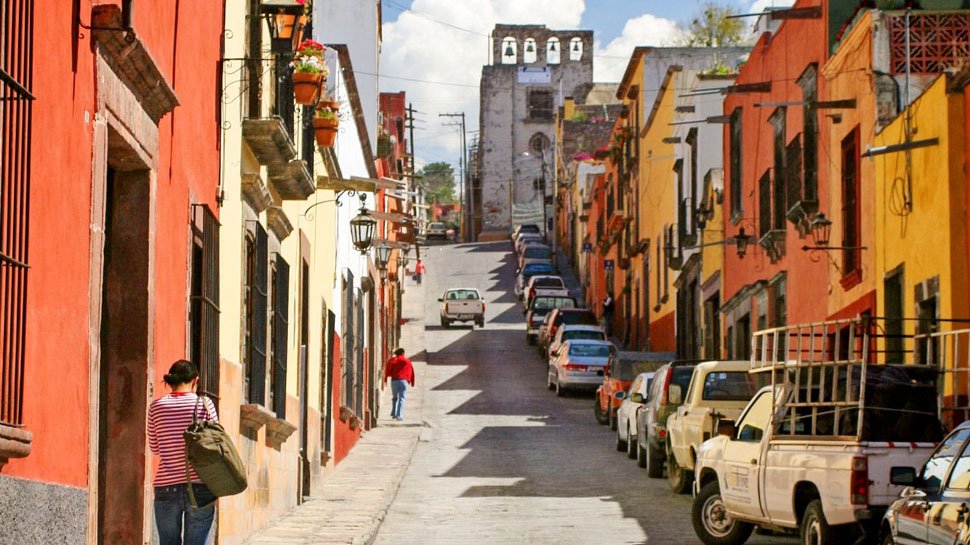
मॉस्को, संयुक्त राज्य अमेरिका कि उत्तरी सीमा पर स्थित है. इस देश की कला और संस्कृति पर्यटकों को अपनी ओर आकर्षित करती है. कॉपर कैनियन, मॉस्को का बेहद खूबसूरत स्थान है, ये घाटी की एक सीरीज है जो अपने आकर्षित हरे रंग के तांबे के लिए फेमस हैं. यहां से गुजरने वाला रास्ता 37 पुलों और 86 सुरंगों से होकर जाता है. इसके अलावा गुआनाजुआटो में बारोक कोबलस्टोन लेन और फुटपाथ कैफे जैसे शानदार दर्शनीय स्थल हैं. हालांकि मॉस्को का प्रमुख आकर्षण चिचेन इत्जा पर्यटन स्थल युकाटन प्रायद्वीप में स्थित है. ये रहस्यम इमारतों के लिए जाना जाता है.
3. मलेशिया
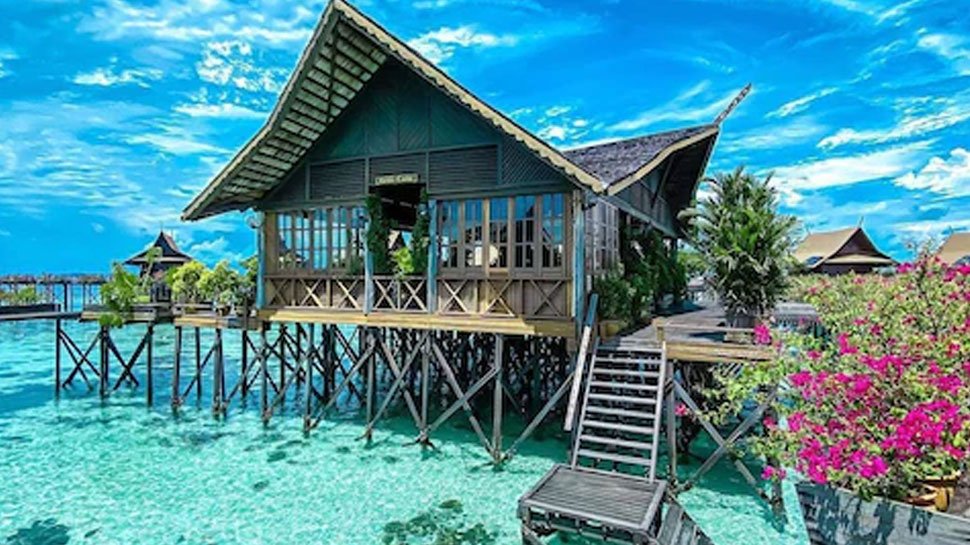
घूमने के शौकीन लोगों के लिए सबसे खास जगहों में एक मलेशिया है. मलेशिया टूरिस्ट प्लेस के लिए पूरी दुनिया में जाना जाता है. यहां का सी-फूड काफी फेमस है. कम बजट वाले लोग आसानी से यहां पर घूम सकते हैं. कुआलालुम्पुर मलेशिया की राजधानी है जो सबसे ज्यादा खूबसूरत जगहों में से एक है. यहां की ऊंची-ऊंची इमारतें पर्यटकों को अपनी और खुद-ब-खुद आकर्षित कर लेती हैं. इसके बाद दातारन मर्डेका में स्थित सुल्तान अब्दुल समद के महल का अद्भुत नजारा देख सकते हैं. इसके अलावा आप पेनांग हिल भी जा सकते हैं जिसे मलेशिया का सबसे ज्यादा प्रसिद्ध हिल स्टेशन माना गया है. यह जॉर्ज टाउन सिटी से लगभग 5 गुणा ज्यादा ठंडा है.
4. रूस
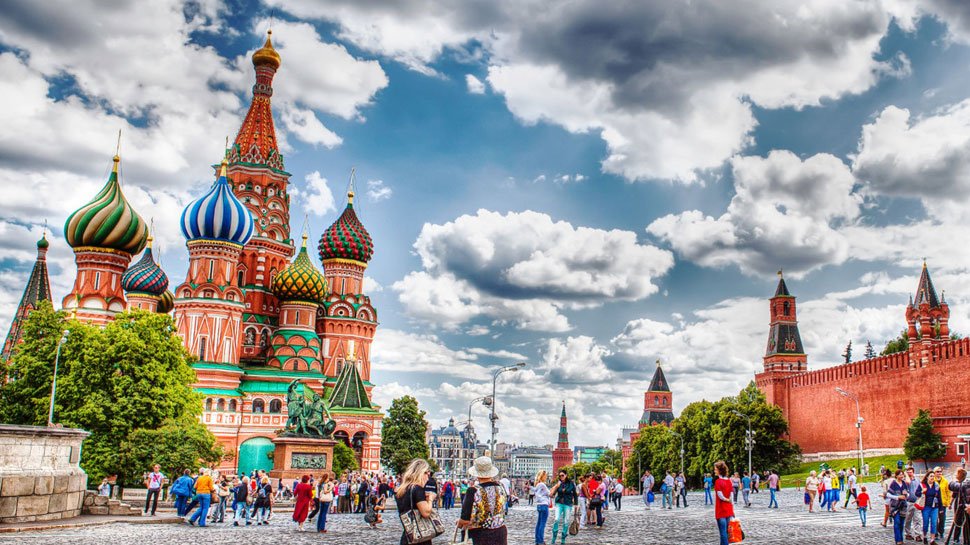
‘मेरा जूता है जापानी, ये पतलून इंग्लिशतानी, सर पे लाल टोपी रूसी, फिर भी दिल है हिन्दुस्तानी.’ राज कपूर का ये सदाबहार गाना आज भी कहीं न कहीं रूस में आपको सुनने को मिल जाएगा. रूस एक ऐसा देश है जो प्राकृतिक रूप से भी बहुत खूबसूरत है. यहां बहुत सी मशहूर इमारतें जैसे क्रेमलिन काम्प्लेक्स, रेड स्क्वायर, सेंट बेसिल कैथेड्रल अपनी बनावट के लिए मशहूर हैं. पढ़ाई, साहित्य, संस्कृति का यह एक बेहतरीन गढ़ है. आर्ट और कल्चर के दीवानों के लिए मॉस्को सबसे बेहतरीन जगह है. रूस की राजधानी मॉस्को में खाने-पीने के कई ऑप्शन है. मुस्लिम और क्रिश्चन समुदाय का मेलजोल देखना हो, तो कजान एक परफेक्ट जगह है. यहां पर चर्च और मस्जिद देखने को मिलेंगे. यूनेस्को ने इसे वर्ल्ड हेरिटेज के तौर पर लिस्ट में शामिल किया हुआ है. वहीं अगर आपको झील पसंद है, तो आप रूस की बेकल झील जरूर देख सकते हैं. दुनिया के 20 प्रतिशत हिस्से का साफ पानी इस झील में है. करीब 25 मिलियन साल पुरानी ये झील विशाल पहाड़ों से ढकी हुई है.
5. स्विट्जरलैंड
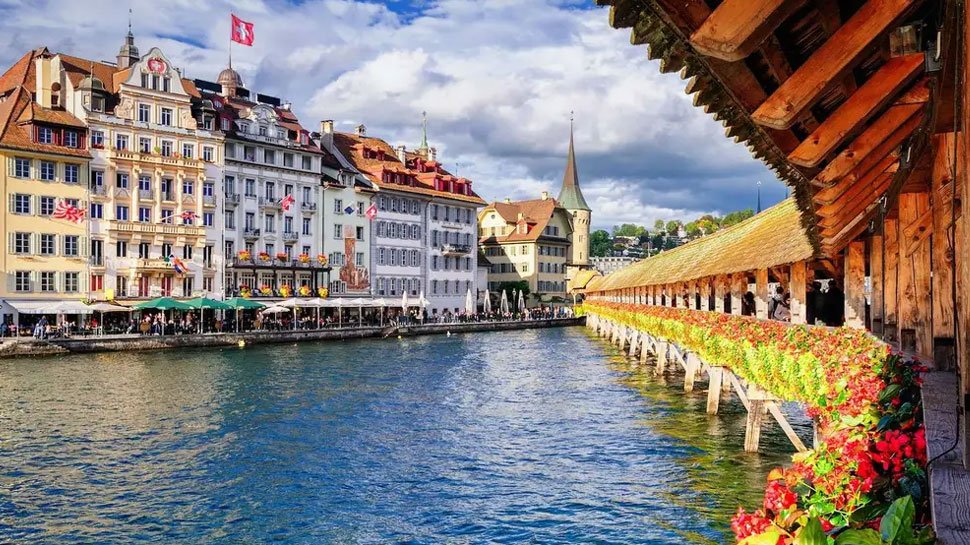
दुनिया की खूबसूरत टूरिस्ट डेस्टिनेशन्स के बारे में चर्चा हो और स्विट्जरलैंड का नाम न लिया जाए, ऐसा तो हो ही नहीं सकता. पर्यटकों की लिस्ट में स्विट्जरलैंड हमेशा टॉप 5 में रहता है. इस देश को झीलों का देश भी कहा जाता है, क्योंकि यहां कुदरत मौसम के अलग-अलग रंग दिखाती है. इसलिए नेचर लवर्स को ये जगह बहुत पसंद आती है. स्विट्जरलैंड सबसे खास जगहों में एक है. घूमने के लिहाज से राइन नदी के तट पर बसा स्विट्जरलैंड का बेसल शहर सबसे आकर्षक है. इसके अलावा आप द राइन फॉल्स भी जा सकते हैं. 23 मीटर ऊंचा और 150 मीटर चौड़ा राइन फॉल्स यूरोप के सबसे बड़े और सबसे अधिक पानी से भरपूर झरनों में से एक है. यह स्विट्जरलैंड की बहुत ही खूबसूरत जगह है, जहां से आप बर्फ के पहाड़ों का अद्भुत नजारा भी देख सकते हैं.
Posted by Technical Mechzone
काम की बात! क्यों गर्म हो जाता है स्मार्टफोन? जानें कैसे अपने फोन को ओवर हीटिंग से बचा सकते हैं आप
फोन इस्तेमाल करते हुए हमें कई बार महसूस होता है कि फोन काफी गर्म हो गया है. स्मार्टफोन का ज्यादा गर्म होना खतरनाक भी हो सकता है, इससे आपके फोन की बैटरी भी फट सकती है. जानें कैसे ओवरहीटिंग की समस्या से बचा जा सकता है.

आजकल स्मार्टफोन (Smartphone) हमारी रोजमर्रा की ज़िंदगी का ज़रूरी हिस्सा बन चुका है. कॉल करना हो, मेल भेजना हो, इंटरनेट का इस्तेमाल करना हो या फिर डिजिटल भुगतान करना हो, आजकल सभी छोटे बड़े काम के लिए हम अपने स्मार्टफोन पर निर्भर होते हैं. कई बार ज्यादा इस्तेमाल करने के कारण स्मार्टफोन गर्म होने लगता है. स्मार्टफोन का ज्यादा गर्म होना खतरनाक भी हो सकता है, इससे आपके फोन की बैटरी भी फट सकती है.
आखिर क्यों होती है ओवरहीटिंग की समस्या? हेवी ग्राफिक्स और लार्ज एप्लिकेशन का ज्यादा इस्तेमाल भी फोन को गर्म कर सकता है.
>>फोन में ज्यादा एप्लिकेशन, गेम या अन्य सॉफ्टवेयर डाउनलोड करने के कारण ये समस्या होती है.
>>कुछ मामलों में, फोन की कॉम्युनिकेशन यूनिट और कैमरा भी गर्मी का कारण बनता है.
कैसे बचें ओवर हीटिंग से?
फोन को गर्म करने से न सिर्फ इसे इस्तेमाल करना चुनौतीपूर्ण हो जाता है बल्कि इसकी परफॉर्मेंस भी खराब हो जाती है. तो चलिए जानते है इस समस्या से कैसे निजात पाया जा सकता है-
फोन कवर का इस्तेमाल करेंस्मार्टफोन के गर्म होने का एक बड़ा कारण है मोबाइल कवर. तेज धूप और गर्म वातावरण का असर भी मोबाइल पर पड़ता है. मोबाइल कवर भी अंदर की गर्मी को बाहर नहीं आने देते और फोन की कूलिंग में बाधा डालते हैं. फोन के कवर को समय-समय पर हटाना जरूरी है और अगर इस्तेमाल में नहीं है तो स्मार्टफोन को पंखे के नीचे रखें.
स्मार्टफोन को कभी फुल चार्ज न करें
कभी भी स्मार्टफोन को 100% चार्ज नहीं करना चाहिए. हमेशा अपने फोन में 90 फीसदी या उससे कम बैटरी रखें. इतना ही नहीं फोन की बैटरी को 20% से नीचे न जाने दें. बार-बार बैटरी चार्ज करने से ओवरहीटिंग हो जाती है, और अगर फोन में कम बैटरी है तो ये इसकी लाइफ के लिए नुकसान दायक हो सकता है. अपने फोन को दिन में 2-3 बार ही चार्ज करें.
बैकग्राउंड ऐप्स बंद करें
अगर आप किसी ऐप का उपयोग नहीं कर रहे हैं, तो उन्हें बैकग्राउंड से बंद कर दें. बैकग्राउंड में ऐप चलते रहते हैं जो फोन को ओवरहीट भी कर सकती हैं. आप जिन ऐप्स का उपयोग नहीं कर रहे हैं, उन्हें बंद करने के लिए ऐप आइकन पर फोर्स स्टॉप को सेलेक्ट कर लें.
ओरिजिनल चार्जर और USB का इस्तेमाल करें-
अपने स्मार्टफोन को डुप्लीकेट या सस्ते चार्जर से चार्ज करने से स्मार्टफोन में ओवरहीटिंग की समस्या हो सकती है. इतना ही नहीं बैटरी फटने का खतरा भी होता है.
Posted by Technical Mechzone
Whatsapp, Facebook और Instagram का सर्वर डाउन! क्या आप जानते हैं Server Down का मतलब?
दुनिया में लोग व्हाट्सऐप (Whatsapp), फेसबुक (Facebook) और इंस्टाग्राम (Instagram) सर्विस (Server Down) का इस्तेमाल नहीं कर पा रहे हैं।

Server Down: दुनिया में लोग व्हाट्सऐप (Whatsapp), फेसबुक (Facebook) और इंस्टाग्राम (Instagram) सर्विस (Server Down) का इस्तेमाल नहीं कर पा रहे हैं। सभी सोशल मीडिया यूजर्स को इस समस्या का सामना करना पड़ रहा है। भारतीय समय के अनुसार 4 अक्टूबर 2021 की रात 8 बजकर 26 मिनट पर सोशल मीडिया प्लेटफार्म व्हाट्सऐप (Whatsapp Server Down), फेसबुक (Facebook Server Down) और इंस्टाग्राम (Instagram Server Down) का सर्वर डाउन हो गया।
यह जानकारी तो सभी तक पहुंच गई होगी कि सोशल मीडिया प्लेटफॉर्म्स के सर्वर डाउन हो गए हैं। लेकिन क्या आपको पता है कि ये ‘सर्वर डाउन’ होने का मतलब क्या होता है’ यदि नहीं तो हम आपको बताते हैं Server Down का मतलब क्या है’ लेकिन उससे पहले आपको यह जानना चाहिए कि सर्वर क्या होता है’
क्या होता है सर्वर (What is Server)
सर्वर एक ऐसा कंप्यूटर या सॉफ्टवेयर प्रोग्राम होता है जो किसी भी डिवाइस को डाटा सर्विस, रिसोर्स, प्रोग्राम या फंक्शनैलिटी से जोड़ता है। यह पूरा नेटवर्क क्लाइंट सर्वर मॉडल कहलाता है।
क्या होता है सर्वर डाउन (What is Server Down)
जब सर्वर खुद से जुड़े अन्य डिवाइसों को सर्विस देना बंद कर देता है या फिर सर्वर काम करना बंद कर देता है तो उसे सर्वर डाउन होना कहते हैं। अन्य शब्दों में इसे सर्वर क्रैश (Server Crash) भी कहा जाता है। फेसबुक (Facebook) ने अपनी सर्विस में आ रही रुकावट के बारे यूजर्स के लिए ट्विटर पर लिखा “हम जानते हैं कि कुछ लोगों को हमारे ऐप्स और उत्पादों तक पहुंचने में समस्या हो रही है। हम चीजों को जल्द से जल्द सामान्य करने के लिए काम कर रहे हैं, और किसी भी असुविधा के लिए हम क्षमा चाहते हैं।”
https://twitter.com/Facebook/status/1445061804636479493?t=oZ7vvX47jBs-A8JQM1P5xw&s=19We’re aware that some people are having trouble accessing our apps and products. We’re working to get things back to normal as quickly as possible, and we apologize for any inconvenience.
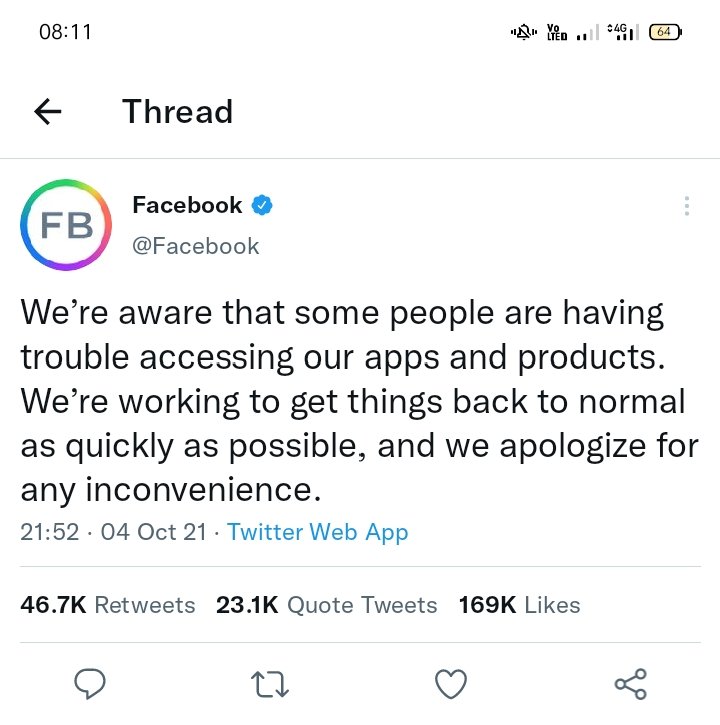
वहीं व्हाट्सऐप ने भी ट्विटर पर पोस्ट शेयर कर लिखा, “हमें पता है कि इस समय कुछ लोगों को WhatsApp में समस्या आ रही है। हम चीजों को वापस सामान्य करने के लिए काम कर रहे हैं और जल्द से जल्द यहां एक अपडेट भेजेंगे। आपके धैर्य के लिए धन्यवाद!”
https://twitter.com/WhatsApp/status/1445060216161116168?t=f1Uy6MsQs0a9DZCt4J2YGA&s=19 We’re aware that some people are experiencing issues with WhatsApp at the moment. We’re working to get things back to normal and will send an update here as soon as possible.
Thanks for your patience!
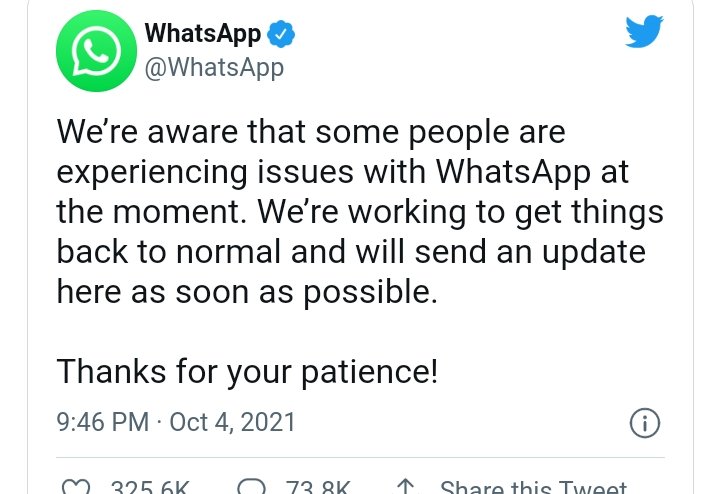
Posted by Technical Mechzone
फिर डूबी Elon Musk की पसंदीदा क्रिप्टोकरेंसी, निवेशकों को हुआ जबरदस्त नुकसान
क्रिप्टोकरेंसी मार्केट में जबरदस्त अस्थिरता देखने को मिल रही है। बिटकॉइन, इथेरियम और डॉगेकॉइन तीनों में ही जबरदस्त गिरावट देखने को मिल रही है। यह तीनों दुनिया के सबसे अमीर शख्स एलन मस्क की फेवरेट क्रिप्टोकरेंसीज हैं।

एलन मस्क की फेवरेट क्रिप्टोकरेंसीज क्रैश होती हुई दिखाई दे रही हैं। बिटकॉइन एक बार फिर से 45 हजार डॉलर से नीचे आ गए हैं। वहीं इथेरियम की कीमत में भी करीब 8 फीसदी की गिरावट देखने को मिल रही है। जबकि डोगेकॉइन में करीब 11 फीसदी की गिरावट है। जिसकी वजह से निवेशकों को जबरदस्त नुकसान हुआ है। वैसे ब्लूमबर्ग की रिपोर्ट में दावा किया गया है कि इस साल बिटकॉइन के दाम एक लाख डॉलर तक हो सकते हैं। इसके बिटकॉइन को दोगुना रास्ता तय करना होगा।
बिटकॉइन की कीमत में भारी गिरावट
पहले बात दुनिया की सबसे बड़ी क्रिप्टोकरेंसी बिटकॉइन की बात करें तो मौजूदा समय में 8.12 फीसदी की गिरावट के साथ कारोबार कर रहा है। जिसकी वजह से बिटकॉइन के दाम 43528 डॉलर पर आ गए हैं। जोकि बीते 24 घंटे में 43288 डॉलर के साथ दिन के निचले स्तर पर भी आ चुका है। आपको बता दें कि ब्लूमबर्ग के एनालिस्ट माइक मैक्ग्लोन ने अपने ट्वीट में दावा किया है कि कि इस साल के अंत तक बिटकॉइन के दाम एक लाख डॉलर पर पहुंच सकते हैं।
इथेरियम की इथेरियम में 10 फीसदी की गिरावट
वहीं दूसरी ओर इथेरियम की कीमत में भी बड़ी गिरावट देखने को मिल रही है। मौजूदा समय में इथेरियम की कीमत में 10 फीसदी से ज्यादा की गिरावट देखने को मिल रही है। जिसके बाद 3000 डॉलर से नीचे जाते हुए 2990 डॉलर पर कारोबार कर रहा है। जबकि कारोबारी सत्र के दौरान इथेरियम 2973 डॉलर के साथ दिन के निचले स्तर पर भी चली गया था। बीते 24 घंटे में इथेरियम के दाम में उच्च स्तर से 400 डॉलर से ज्यादा की गिरावट देखने को मिल चुकी है।
डॉगेकॉइन हुआ क्रैश
जबकि बिटकॉइन और इथेरियम के मुकाबले काफी सस्ती क्रिप्टोकरेंसी डॉगेकॉइन पूरी तरह से क्रैश हो गया है। आज इसमें 14 फीसदी की गिरावट देखने को मिल रही है। मौजूदा समय में डॉगेकॉइन के दाम 0.201898 डॉलर पर आ गए हैं। जबकि कारोबारी सत्र के दौरान डॉगेकॉइन के दाम में 0.032856 डॉलर की गिरावट देखने को मिल चुकी है। जानकारों की मानें तो आने वाले दिनों में अस्थिरता कम होगी और कीमत में तेजी देखने को मिलेगी। लांग टर्म में निवेश करने वालों के लिए कोई चिंता करने की बात नहीं है।
Posted by Technical Mechzone
Nature is an important and integral part of mankind
It is one of the greatest blessings for human life; however, nowadays humans fail to recognize it as one. Nature has been an inspiration for numerous poets, writers, artists and more of yesteryears.
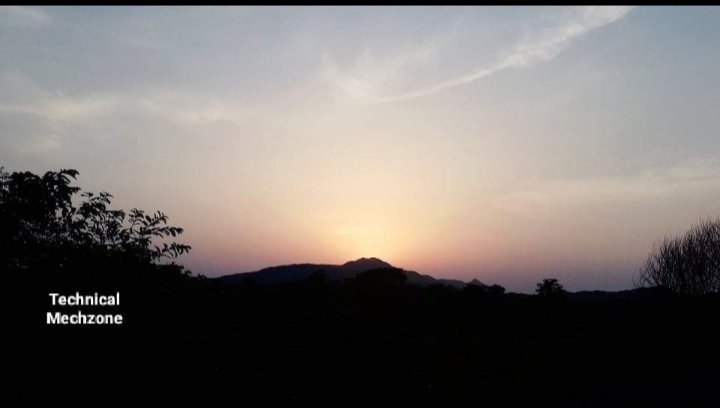
This remarkable creation inspired them to write poems and stories in the glory of it. They truly valued nature which reflects in their works even today. Essentially, nature is everything we are surrounded by like the water we drink, the air we breathe, the sun we soak in, the birds we hear chirping, the moon we gaze at and more. Above all, it is rich and vibrant and consists of both living and non-living things. Therefore, people of the modern age should also learn something from people of yesteryear and start valuing nature before it gets too late.
Significance of Nature
Nature has been in existence long before humans and ever since it has taken care of mankind and nourished it forever. In other words, it offers us a protective layer which guards us against all kinds of damages and harms. Survival of mankind without nature is impossible and humans need to understand that.
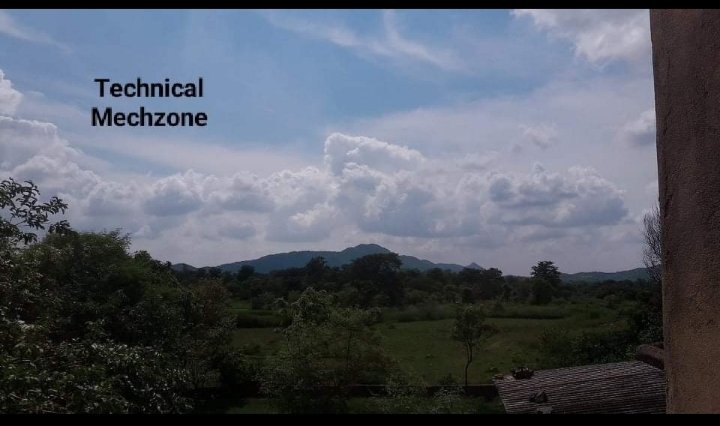
If nature has the ability to protect us, it is also powerful enough to destroy the entire mankind. Every form of nature, for instance, the plants, animals, rivers, mountains, moon, and more holds equal significance for us. Absence of one element is enough to cause a catastrophe in the functioning of human life.
We fulfill our healthy lifestyle by eating and drinking healthy, which nature gives us. Similarly, it provides us with water and food that enables us to do so. Rainfall and sunshine, the two most important elements to survive are derived from nature itself.
Further, the air we breathe and the wood we use for various purposes are a gift of nature only. But, with technological advancements, people are not paying attention to nature. The need to conserve and balance the natural assets is rising day by day which requires immediate attention.
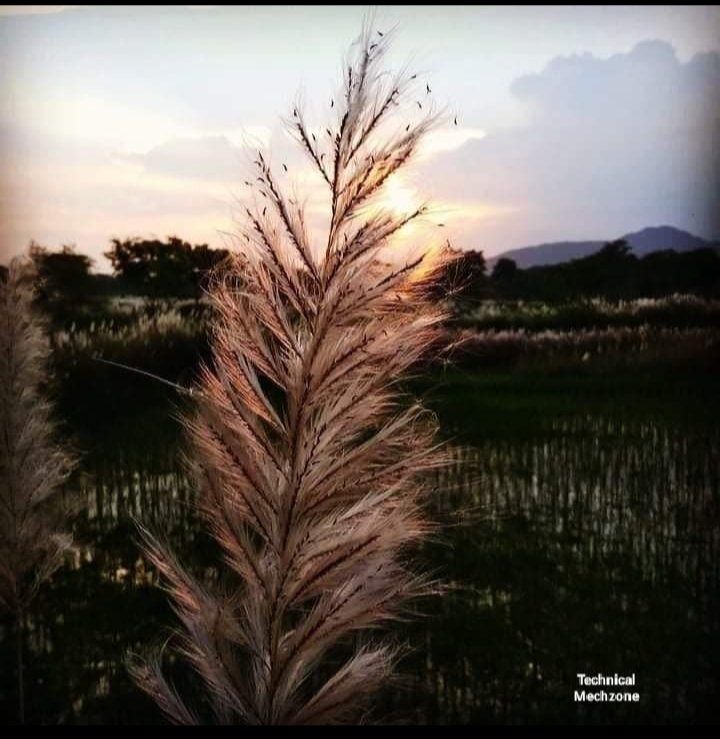
Conservation of Nature
In order to conserve nature, we must take drastic steps right away to prevent any further damage. The most important step is to prevent deforestation at all levels. Cutting down of trees has serious consequences in different spheres. It can cause soil erosion easily and also bring a decline in rainfall on a major level.
Polluting ocean water must be strictly prohibited by all industries straightaway as it causes a lot of water shortage. The excessive use of automobiles, AC’s and ovens emit a lot of Chlorofluorocarbons’ which depletes the ozone layer. This, in turn, causes global warming which causes thermal expansion and melting of glaciers.
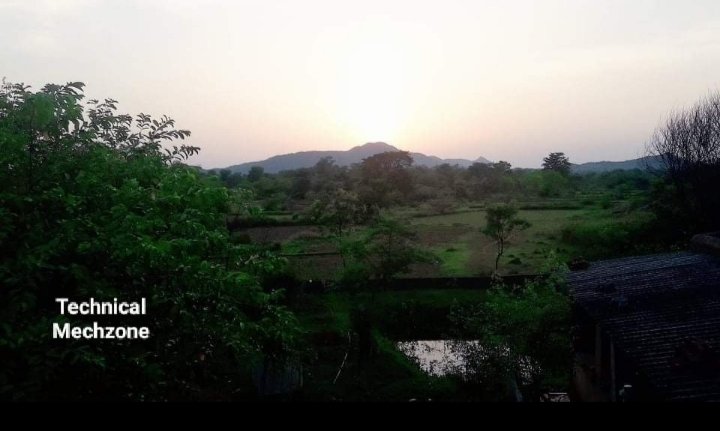
Therefore, we should avoid personal use of the vehicle when we can, switch to public transport and carpooling. We must invest in solar energy giving a chance for the natural resources to replenish.
In conclusion, nature has a powerful transformative power which is responsible for the functioning of life on earth. It is essential for mankind to flourish so it is our duty to conserve it for our future generations. We must stop the selfish activities and try our best to preserve the natural resources so life can forever be nourished on earth
Posted by Technical Mechzone
